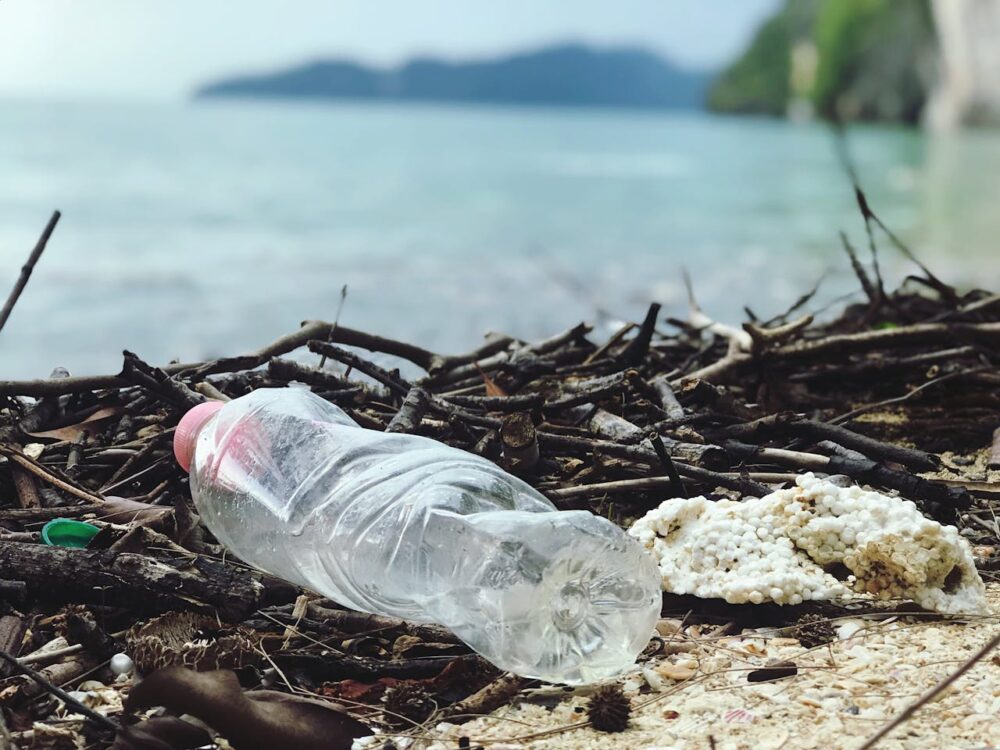Tap Water vs. Bottled Water – which is better?

Water is life, as we say in many parts of the world. But today, we face a choice: tap water or bottled water? This decision, seemingly simple, carries more weight than many realize.
In many countries, tap water flows freely from our faucets, provided by local authorities. On the other hand, bottled water, once a luxury, has become commonplace in shops and homes worldwide.
This article will examine both options, looking at their sources, quality, and impact on our health and wallets. By the end, you’ll have a clearer picture to help you choose the best water for you and your family.
Tap Water
Tap water typically comes from rivers, lakes, or underground sources. Before reaching our homes, it goes through several cleaning steps:
- Collection from the source
- Removal of large bits
- Chemical treatment to clump dirt together
- Settling of heavy particles
- Filtration to remove smaller particles
- Addition of disinfectants to kill harmful germs
The quality of tap water varies greatly around the world. In some countries, it’s safe to drink straight from the tap. In others, additional home treatment is necessary.
Good points of tap water:
- Usually cheaper
- Easy to access
- Often regulated by the government
- No plastic waste
Drawbacks of tap water:
- Quality differs from place to place
- May taste of chlorine
- Can be affected by old pipes
- Sometimes unsafe to drink without treatment
Bottled Water
Bottled water comes in different types:
- Spring water: From natural springs
- Purified water: Treated to remove impurities
- Mineral water: Contains natural minerals
- Artesian water: From a specific type of well
The bottling process usually involves:
- Getting water from the source
- Treating it (filtering, using UV light)
- Putting it in bottles
- Sending it to shops
Bottled water is often regulated as a food product.
Good points of bottled water:

- Easy to carry around
- Consistent taste
- Often seen as purer than tap water
- Useful in emergencies
Drawbacks of bottled water:
- More expensive than tap water
- Creates plastic waste
- Sometimes less regulated than tap water
- Takes a lot of energy to make and transport
Quality Comparison
The quality of both tap and bottled water can vary widely depending on the country and even the specific area within a country.
In many developed nations, tap water is strictly regulated and frequently tested. However, in some parts of the world, tap water may be unsafe to drink without additional treatment.
Bottled water quality can also vary. While many brands provide safe, clean water, studies in various countries have found instances of contamination in some bottled water samples.
Taste differences often come down to personal preference. Tap water taste can vary based on its source and treatment. Many people prefer the taste of bottled water, but this isn’t universal.
Factors affecting taste include:
- Chlorine content (often in tap water)
- Mineral content
- pH level
- Water temperature
- Bottle material (for bottled water)
It’s important to note that in some places, bottled water is simply treated tap water. The source should be listed on the label, but it’s not always clear.
Cost Analysis
The cost difference between tap and bottled water is significant in most parts of the world:
- Tap water: Generally very inexpensive. In most countries, you can get thousands of litres of tap water for the price of one bottle of water.
- Bottled water: Much more expensive. Depending on the brand and location, it can cost hundreds or even thousands of times more than tap water.
- Long-term costs: A family relying on bottled water for drinking and cooking can spend a substantial portion of their income on water alone. This can be particularly burdensome in developing countries.
- Hidden costs: For tap water, there might be costs for home filtration systems. For bottled water, there’s the environmental cost of plastic production and disposal.
Environmental Impact
The environmental impact of bottled water is significant:
- Plastic waste:
 Millions of plastic bottles end up in landfills and oceans every year. Even when recycled, the process uses energy and resources.
Millions of plastic bottles end up in landfills and oceans every year. Even when recycled, the process uses energy and resources. - Energy consumption: Producing, filling, and transporting bottled water requires much more energy than treating and pumping tap water.
- Water waste: It can take up to 3 litres of water to produce 1 litre of bottled water.
- Tap water’s impact: While generally lower, tap water systems do require energy for treatment and pumping. Old, leaky pipes can waste significant amounts of water.
- Carbon footprint: The bottled water industry contributes to carbon emissions through production and transportation.
Health Considerations
Both tap and bottled water can have health implications:
- Tap water: In many countries, it’s fortified with beneficial minerals like fluoride. However, old pipes can leach harmful substances like lead. In areas with poor water treatment, it may carry waterborne diseases.
- Bottled water: Generally safe, but there are concerns about chemicals leaching from plastic bottles, especially when exposed to heat. Some bottled water lacks beneficial minerals found in tap water.
- Mineral content: This varies greatly in both tap and bottled water. Some mineral-rich waters may provide small amounts of essential nutrients.
- Hydration: Both types of water hydrate equally well. The choice doesn’t affect the body’s hydration levels.
- Dental health: Tap water in some countries contains fluoride, which can help prevent tooth decay. Most bottled water doesn’t contain fluoride.
The most important health consideration is having access to safe, clean water, regardless of whether it’s from a tap or a bottle.
Convenience Factor
The convenience of tap and bottled water varies depending on where you live:
- Tap water: In many urban areas, it’s readily available at home, work, and public spaces. However, in some regions, access to clean tap water is limited or non-existent.
- Bottled water: Widely available in shops, making it convenient when you’re out and about. It’s especially useful when travelling to areas with unsafe tap water.
- Portability: Bottled water is easier to carry, but reusable bottles filled with tap water offer a more eco-friendly portable option.
- Home filtration: For those with concerns about tap water quality, home filtration systems offer a middle ground between tap and bottled water.
Emergency Situations
Water becomes crucial during emergencies like natural disasters or infrastructure failures:
- Bottled water: Often the go-to solution in emergencies. It’s easy to distribute and doesn’t rely on potentially damaged water systems.
- Tap water: Can become unsafe or unavailable during disasters due to contamination or infrastructure damage.
- Preparedness: Many emergency management agencies recommend keeping a supply of bottled water at home for emergencies.
- Long-term solutions: While bottled water is useful in the short term, restoring safe tap water is usually the priority for long-term recovery.
Global Perspective
Tap water quality variations around the world
The quality of tap water varies significantly across different countries and regions:
- Developed countries: Many developed nations like the United States, Canada, and much of Western Europe generally have high-quality tap water that meets or exceeds safety standards. These countries often have robust water treatment facilities and strict regulations.
- Developing countries: In many developing nations, tap water quality can be inconsistent or unreliable. Issues may include:
- Inadequate water treatment infrastructure
- Contamination from industrial or agricultural runoff
- Poorly maintained distribution systems leading to recontamination
- Lack of consistent monitoring and enforcement of water quality standards
- Specific regional challenges: Some areas face unique water quality issues:
- Arsenic contamination in parts of Bangladesh and India
- High levels of nitrates in agricultural regions
- Lead contamination from old pipes in some older cities
Bottled water as a solution in areas with poor water infrastructure
In regions where tap water is unsafe or unreliable, bottled water often becomes a necessary alternative:
- Short-term solution: Bottled water can provide immediate access to safe drinking water in areas affected by natural disasters or other emergencies that disrupt water supplies.
- Long-term reliance: In some developing countries, many people rely on bottled water as their primary drinking water source due to ongoing issues with tap water quality.
- Economic impact: The reliance on bottled water can be a significant financial burden for individuals and families in low-income areas.
- Environmental concerns: Heavy reliance on bottled water leads to increased plastic waste, which is particularly problematic in areas with limited recycling capabilities.
- Regulation challenges: In some countries, bottled water may not be well-regulated, leading to quality concerns and potential health risks.
- Alternative solutions: While bottled water provides a temporary fix, long-term solutions often involve:
- Improving water treatment infrastructure
- Implementing point-of-use water treatment systems
- Education on water safety and sanitation practices
Making an Informed Choice
When deciding between tap and bottled water, consider these factors:
- Local water quality: Research the quality of tap water in your area. Many countries publish water quality reports.
- Personal health needs: If you have specific health concerns, consult a doctor about the best water choice for you.
- Environmental impact: Consider using a reusable water bottle with tap water or home-filtered water to reduce plastic waste.
- Cost: Calculate the long-term cost difference between tap and bottled water for your household.
- Taste preference: If you dislike the taste of your tap water, consider a home filtration system rather than relying on bottled water.
- Intended use: You might choose differently for drinking water versus cooking or other household uses.
- Travel plans: When travelling, research the safety of local tap water at your destination.
Conclusion
The choice between tap and bottled water isn’t always straightforward. It depends on various factors including local water quality, personal preferences, and environmental concerns.
In many parts of the world, tap water is safe, affordable, and environmentally friendly. However, bottled water serves an important role, especially in areas lacking clean tap water and during emergencies.
Ultimately, the most important thing is having access to clean, safe water. Whether it comes from a tap or a bottle, staying hydrated is crucial for our health and well-being. Which is why you should consider supporting the noble cause AquaMaya is spearheading.
There are a lot of people around the world who still lack access to clean water of any kind, and AquaMaya is working to change this reality in West Africa by bringing sustainable water solutions to communities in need, improving health, reducing child mortality from waterborne diseases, and fostering economic development. You can support AquaMaya’s mission. Whether through donations, spreading awareness, or volunteering, your actions can help make clean water a reality for those who need it most. Visit our website to learn more about how you can contribute.
Together, we can work towards a world where everyone has access to safe, clean water. Be it bottled water or tap water.
Sources:
1. https://www.healthline.com/nutrition/tap-water-vs-bottled-water#bottom-line
3. https://www.medicalnewstoday.com/articles/327395
4. Azoulay A, Garzon P, Eisenberg MJ. Comparison of the mineral content of tap water and bottled waters. J Gen Intern Med. 2001 Mar;16(3):168-75. doi: 10.1111/j.1525-1497.2001.04189.x. PMID: 11318912; PMCID: PMC1495189. https://www.ncbi.nlm.nih.gov/pmc/articles/PMC1495189/
5. https://www.watersmartsystems.com/24-bottled-water-statistics






